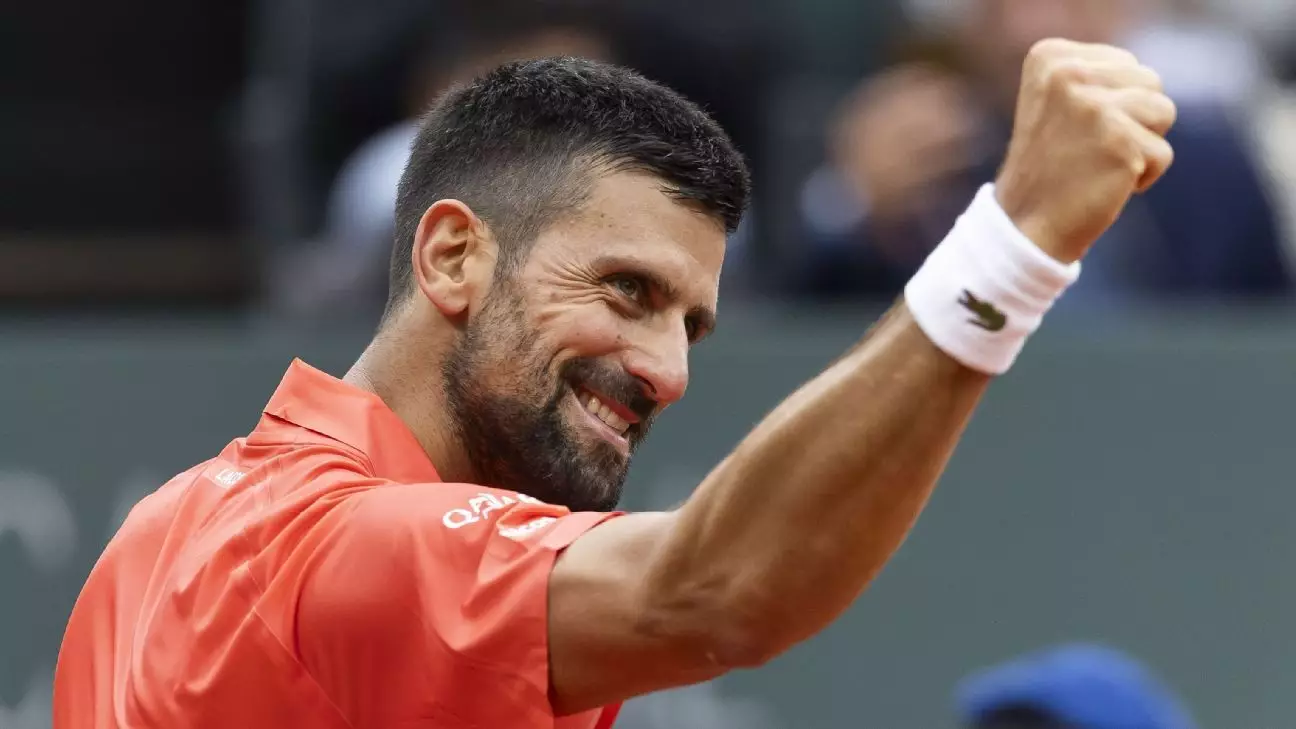In a remarkable display of resilience, Novak Djokovic triumphed on clay for the first time this season, overpowering Marton Fucsovics 6-2, 6-3 at the Geneva Open. Under the gloomy, rain-soaked Swiss sky, Djokovic’s victory marked a significant turnaround for a player who had faced disappointment in his prior outings on the dirt this spring. Losing his initial two clay matches this season perhaps raised questions about his form and preparedness leading into the demanding French Open. However, this victory not only reestablished his confidence but also symbolized a pivotal moment in his quest for perfection on the ATP circuit.
A Statistical Masterclass
Evidently, Djokovic approached the match with a meticulous game plan that paid dividends. By successfully landing an impressive 73% of his first serves and evading any break-point opportunities against him, he highlighted the superiority of his serve. Winning with a precise backhand winner on his second match point underlined his tactical prowess and unwavering focus. As Djokovic aptly noted in his on-court interview, “It helps if you have a good serve and today I think that was my strongest shot.” This mastery of serve significantly contributed to his rhythm and established the momentum he desperately needed as he eyes his landmark 100th career title.
The Road Ahead: Facing Matteo Arnaldi
Looking ahead, the road to success remains intricate. Djokovic’s upcoming quarterfinal match against Matteo Arnaldi poses a direct challenge. Notably, Arnaldi previously claimed victory over the tennis titan at the Madrid Masters, raising the stakes for their next encounter. With Djokovic’s recent slump behind him, the intrigue lies in whether he can reverse this earlier defeat and capitalize on the momentum gained from his recent win. It’s a tantalizing prospect: can Djokovic maintain his new-found confidence and adapt his strategy against a player who has already managed to outscore him?
The Geneva Open: A Crucial Stop Before Roland Garros
The Geneva Open serves not merely as a competition but as a critical preparation ground for players fine-tuning their skills ahead of the highly anticipated Roland Garros. For the likes of No. 4-ranked Taylor Fritz and other top seeds, this tournament becomes a vital battleground where they can reassert their readiness. Fritz, after a shaky start to the clay season, demonstrated resilience with a solid win over Quentin Halys, setting the stage for a quarterfinal match against sixth-seeded Hubert Hurkacz. This perfectly illustrates the stakes in Geneva: every match serves as a litmus test for players aiming to perfect their game before stepping onto the illustrious clay of Paris.
Unpredictability in the Air
The constant fluctuations in performance seen among elite players add a layer of excitement to the Geneva Open. For instance, Karen Khachanov’s advancement due to Nishikori’s retirement reflects the unpredictable nature of the tournament, spicing up the competition ahead of the French Open. As players vie for position under the clouds of uncertainty, one thing is crystal clear—every match, every point, and every serve will have lasting ramifications for their respective ambitions in the clay season. The stakes are undeniably high, and in the world of elite tennis, while form may falter, the fight for excellence never wanes.


Leave a Reply